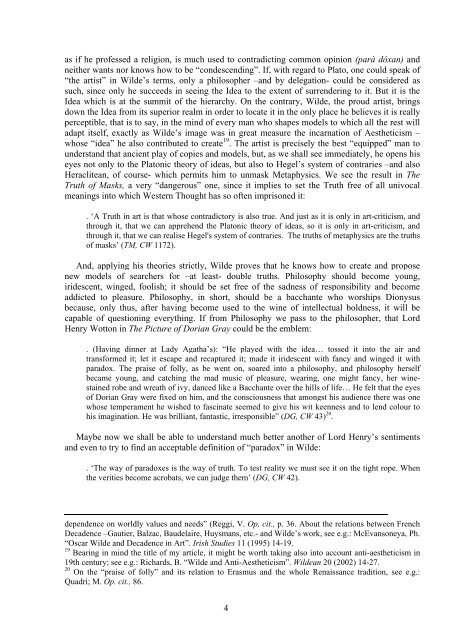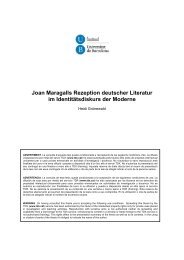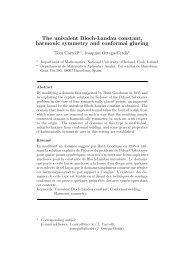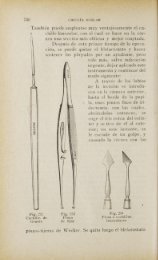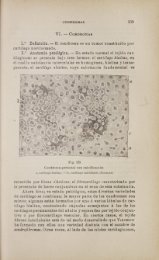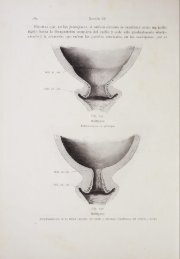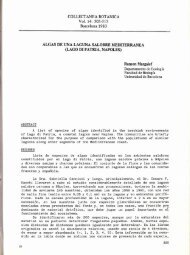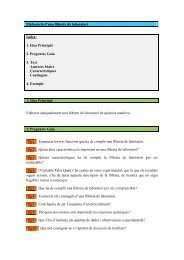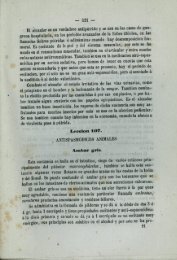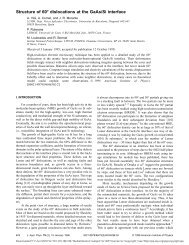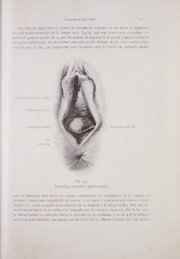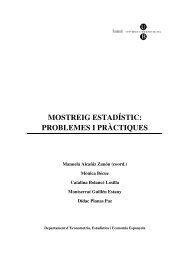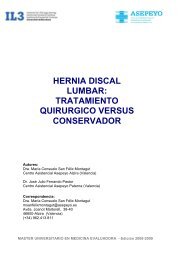Wilde Parsa ang_12080.pdf - Dipòsit Digital de la UB - Universitat ...
Wilde Parsa ang_12080.pdf - Dipòsit Digital de la UB - Universitat ...
Wilde Parsa ang_12080.pdf - Dipòsit Digital de la UB - Universitat ...
Create successful ePaper yourself
Turn your PDF publications into a flip-book with our unique Google optimized e-Paper software.
as if he professed a religion, is much used to contradicting common opinion (parà dóxan) and<br />
neither wants nor knows how to be “con<strong>de</strong>scending”. If, with regard to P<strong>la</strong>to, one could speak of<br />
“the artist” in <strong>Wil<strong>de</strong></strong>’s terms, only a philosopher –and by <strong>de</strong>legation- could be consi<strong>de</strong>red as<br />
such, since only he succeeds in seeing the I<strong>de</strong>a to the extent of surren<strong>de</strong>ring to it. But it is the<br />
I<strong>de</strong>a which is at the summit of the hierarchy. On the contrary, <strong>Wil<strong>de</strong></strong>, the proud artist, brings<br />
down the I<strong>de</strong>a from its superior realm in or<strong>de</strong>r to locate it in the only p<strong>la</strong>ce he believes it is really<br />
perceptible, that is to say, in the mind of every man who shapes mo<strong>de</strong>ls to which all the rest will<br />
adapt itself, exactly as <strong>Wil<strong>de</strong></strong>’s image was in great measure the incarnation of Aestheticism –<br />
whose “i<strong>de</strong>a” he also contributed to create 19 . The artist is precisely the best “equipped” man to<br />
un<strong>de</strong>rstand that ancient p<strong>la</strong>y of copies and mo<strong>de</strong>ls, but, as we shall see immediately, he opens his<br />
eyes not only to the P<strong>la</strong>tonic theory of i<strong>de</strong>as, but also to Hegel’s system of contraries –and also<br />
Heraclitean, of course- which permits him to unmask Metaphysics. We see the result in The<br />
Truth of Masks, a very “d<strong>ang</strong>erous” one, since it implies to set the Truth free of all univocal<br />
meanings into which Western Thought has so often imprisoned it:<br />
. ‘A Truth in art is that whose contradictory is also true. And just as it is only in art-criticism, and<br />
through it, that we can apprehend the P<strong>la</strong>tonic theory of i<strong>de</strong>as, so it is only in art-criticism, and<br />
through it, that we can realise Hegel's system of contraries. The truths of metaphysics are the truths<br />
of masks’ (TM, CW 1172).<br />
And, applying his theories strictly, <strong>Wil<strong>de</strong></strong> proves that he knows how to create and propose<br />
new mo<strong>de</strong>ls of searchers for –at least- double truths. Philosophy should become young,<br />
iri<strong>de</strong>scent, winged, foolish; it should be set free of the sadness of responsibility and become<br />
addicted to pleasure. Philosophy, in short, should be a bacchante who worships Dionysus<br />
because, only thus, after having become used to the wine of intellectual boldness, it will be<br />
capable of questioning everything. If from Philosophy we pass to the philosopher, that Lord<br />
Henry Wotton in The Picture of Dorian Gray could be the emblem:<br />
. (Having dinner at Lady Agatha’s): “He p<strong>la</strong>yed with the i<strong>de</strong>a… tossed it into the air and<br />
transformed it; let it escape and recaptured it; ma<strong>de</strong> it iri<strong>de</strong>scent with fancy and winged it with<br />
paradox. The praise of folly, as be went on, soared into a philosophy, and philosophy herself<br />
became young, and catching the mad music of pleasure, wearing, one might fancy, her winestained<br />
robe and wreath of ivy, danced like a Bacchante over the hills of life… He felt that the eyes<br />
of Dorian Gray were fixed on him, and the consciousness that amongst his audience there was one<br />
whose temperament he wished to fascinate seemed to give his wit keenness and to lend colour to<br />
his imagination. He was brilliant, fantastic, irresponsible” (DG, CW 43) 20 .<br />
Maybe now we shall be able to un<strong>de</strong>rstand much better another of Lord Henry’s sentiments<br />
and even to try to find an acceptable <strong>de</strong>finition of “paradox” in <strong>Wil<strong>de</strong></strong>:<br />
. ‘The way of paradoxes is the way of truth. To test reality we must see it on the tight rope. When<br />
the verities become acrobats, we can judge them’ (DG, CW 42).<br />
<strong>de</strong>pen<strong>de</strong>nce on worldly values and needs” (Reggi, V. Op, cit., p. 36. About the re<strong>la</strong>tions between French<br />
Deca<strong>de</strong>nce –Gautier, Balzac, Bau<strong>de</strong><strong>la</strong>ire, Huysmans, etc.- and <strong>Wil<strong>de</strong></strong>’s work, see e.g.: McEvansoneya, Ph.<br />
“Oscar <strong>Wil<strong>de</strong></strong> and Deca<strong>de</strong>nce in Art”. Irish Studies 11 (1995) 14-19.<br />
19 Bearing in mind the title of my article, it might be worth taking also into account anti-aestheticism in<br />
19th century; see e.g.: Richards, B. “<strong>Wil<strong>de</strong></strong> and Anti-Aestheticism”. <strong>Wil<strong>de</strong></strong>an 20 (2002) 14-27.<br />
20 On the “praise of folly” and its re<strong>la</strong>tion to Erasmus and the whole Renaissance tradition, see e.g.:<br />
Quadri; M. Op. cit., 86.<br />
4


